JP title: 英雄伝説 空の軌跡 SC
The Legend of Heroes: Trails in the Sky SC
So here’s a review I thought I wouldn’t be doing but you know how it is, people change their minds. So yeah, I actually beat this game a couple months back and never did a review for it, but the thing is, I love Kiseki with all the passion man can have toward electronic entertainment media, and thusly (you can underline that with red all you want, spellchecker, I’m still using it!), decided to write about it, after all. This is *also* basically a thinly-veiled excuse for me to update a blog I haven’t updated in a million-billion years because I’m too busy abducting bears in Metal Gear Solid 5.
In any case, you’re on your way to reading about the much-loved sequel to Sora no Kiseki FC (First Chapter), also known as Trails in the Sky on the western side of the globe. Buckle those seat belts and enjoy your stay. Also, seeing how SC (Second Chapter) is a direct sequel to a game that ends on the mother of all cliffhangers, there will be FC spoilers in this review. I mean, if you’re reading this, I’m assuming you’ve already beaten that game. If not, shoo! Go finish it and then come back!
Intro time!
Boy, will this song get stuck in your head. Other than being awesome, it also reflects the somewhat bittersweet tone of the game and lets you know that shit’s about to get real. The tagline up there on that first pic? That’s no lie, so get ready for one hell of a ride.
Anyway, as you may remember, the Seemingly Harmless Professor Dude that you paid little to no attention during the game and felt like a useless side character that won’t even appear on popularity polls ended up being the main villain who ruined everything for everyone. Weissman is his true name, I believe; in any case, Joshua learns of his dark past and decides to leave Estelle on the castle terrace, disappearing for good. The story of SC starts the next morning — no time skips whatsoever. The first 20-30 or so minutes of SC see Estelle go through a phase of complete denial, and it’s pretty difficult seeing a character who’s been so upbeat and cheery in FC being a complete emotional wreck. But I felt it was the perfect prologue to a massive adventure, and when she finally comes to terms with reality and resolves to set out on a new adventure to find him, there’s already a sense of fulfillment that only a game like this can convey. And this is only the prologue. Hell, even the music choice for the scene was perfect and reflects how just strong of a character she truly is. This is basically the game that sees her turn from cheeky tomboy into a full-fledged hero, one worthy of the title, without ever losing the traits that made her likable in FC.
If you’re familiar with FC’s fundamental narrative structure, you’ll realize that SC is both very different from, and very much similar to its predecessor. Each chapter more or less worked as a semi-isolated story arc in a specific region of Liberl that ends up being resolved by the end of that given chapter. SC works in a similar way, except you’re kinda sorta retracting your steps — FC ended in Grancel, SC starts there and has you going back to the various other regions like Zeiss, Ruan and so on to solve the various issues the regions are having.
Still (and this is something that may interest FC fans), the majority of the game does indeed take place in the exact same locations that you’ve already seen in FC. Yes, there will be new locales here and there (in fact, the first story arc of the game actually sends you abroad with Anelace to a cool Bracer training facility at Le-Locle) but most of the game is still Liberl and one huge exercise in glorified backtracking. But that’s fine, really: this is a story about Liberl and the men and women who fought to protect it — and seriously, I cannot emphasize this enough. Characterization is given not just to main characters, but most NPCs as well (villagers, city dwellers), making you feel right at home in any city you might visit. This is doubly true in SC, where you’ve already acquainted yourself with all the regions and their people. Saving the world is a common occurrence in JRPGs, but the Sora games make you feel a part of their world to the point where you genuinely don’t want to let the bad guys lay waste to it. This is *your* home, and one definitely worth fighting for, as cheesy as that sounds, and especially when all the people you’ve met during your travels come together to fight a common menace, there’s a genuine sense of unity and belonging.
But I think I got sidetracked there, as I was actually trying to talk about the game’s episodic structure. So yeah, each chapter, at least for the first half of the game (roughly), deals with a number of strange occurrences happening in each region of Liberl and you go there to investigate, hoping to find some leads about Ouroboros and Joshua. Each of these chapters also deal with the backstories and further development of certain party members, so if you felt that FC didn’t really go into details about the pasts of people like Schera, Zane/Jin, Agate (I particularly enjoyed his story arc with Tita) or that the characters needed more development, you’re definitely going get that here in SC. Oh, and yeah, that includes shedding light on Joshua’s full backstory plus having a very nice flashback segment about Esetlle and her parents. There’s also plenty more Olivier because OF COURSE. Either way, Estelle’s quest to find him works as the driving force behind a good chunk of the adventure (compared to FC, this makes it easier to want to press on and keep playing in order to find out what happens next), and let’s just say their relationship concludes in a very satisfying way. Even the incidents you’re investigating in each chapter become more interesting — sightings of mysterious ghost-like apparitions, a seemingly supernatural fog around Rolent, A FUCKING DRAGON, and so on.
There will still be other characters doomed to disappointingly minor roles here (like Anelace, who this game desperately needed more of), but what can you do. The game also introduces Kevin Graham, the priest with a funky accent who actually becomes the main protagonist of Sora 3rd, but more on that game when I get around to finishing / reviewing it (hopefully in this decade!!)
And while the tone is indeed more serious and grandiose, in certain ways, SC doesn’t necessary feel like a *vastly* different game from its predecessor. A Bracer helps whenever/wherever she is needed, and this is true in this game’s case as well: you’ll still have your little side quests and side stories to go through, and yes, you’ll occasionally go on doing menial tasks like fixing the Elmo Village pump or (I shit you not), testing out prototype shoes by walking around the field a lot. Well, you know Estelle, she loves them shoes. It’s actually refreshing to see Estelle not break down in the absence of Joshua (well, aside from the prologue) and avoid falling into the cliché of a character brooding over their lost loved one for ages. In any case, the point I was trying to make is that Liberl’s mundane charm was not lost in the transition, so if you enjoyed that kind of thing in FC, it certainly didn’t go anywhere. But if you found it tedious there… well, just a fair warning in advance. I started SC immediately after finishing FC and honestly felt like I was just continuing the same game, as opposed to playing a completely different installment. Speaking of tedious, the later half of the game does have a chapter dedicated to soldiering through a number of near-identical-looking dungeons that kinda put my endurance to a test. But hey, at least the game’s final dungeon is more interesting and cool-looking than FC’s (which was horrible), so there’s that.
Misc stuff. The music improved, and will actually continue to improve in the 3rd game. But there’s already a notable change in SC — while FC’s tracks were charming, I didn’t find its soundtrack particularly memorable, save for the insanely catchy battle theme. Well, guess what, SC’s battle theme is just as cool, if not cooler. Add in a number of really moving songs that go perfectly with the game’s various awesome moments, and you’ve got yourself a soundtrack I’m actually quite happy to listen to on its own. As for the technical side of things: if you can, do absolutely play the PC version. Don’t worry, it supports gamepads just fine, if that worries you. It also looks better visually than the PSP port (better textures and cool shadows, see the first pic in this review after the OP song) and runs at a silky smooth 60 FPS, which is a huge plus. Quick update: oh right, I completely forgot about the FC/SC Evolution editions for Vita. Those have full voice acting so one could be tempted to pick them over the unvoiced PC versions.
Gameplay-wise, things are going to be familiar to fans of FC, although there are some changes, like being able to unleash chain attacks: this basically means that 2 to 4 characters gang up on an enemy and beat it to a pulp. This comes with a CP cost for each participant, but can be an effective way to focus fire on a tougher foe. Difficulty-wise, only some of the late-game bosses felt somewhat challenging and the final boss made me curse once or twice as I recall, otherwise the game isn’t terribly difficult if you diligently level up and have the right spell combinations at the ready.
Anyway, if you enjoyed FC like I did, then it’s a no-brainer that you play this one as well. I shouldn’t even have to tell you this. The game is also considerably longer than the first installment: FC took me 50-ish hours to complete while SC lasted me over 80 (!) with most side quests done. It definitely improves upon the first game in every aspect, sees the return of the world and characters you grew attached to in FC and brings Estelle & Joshua’s story to a close, but it also keeps elements that people may have disliked in FC. And you still do plenty of average Bracer’s work (which I personally enjoyed, but still). So be warned that the difference between the two games is undeniable, but it’s not exactly day and night, I feel.
P.S. There’s also a manga adaptation of SC by Kitsutsuki Shinki, the first volume of which I checked out several months ago. It follows the game’s events relatively closely and has adorable art that reminds me of 90s anime, so it’s an awesome little extra to read while playing the game. I do recommend it.
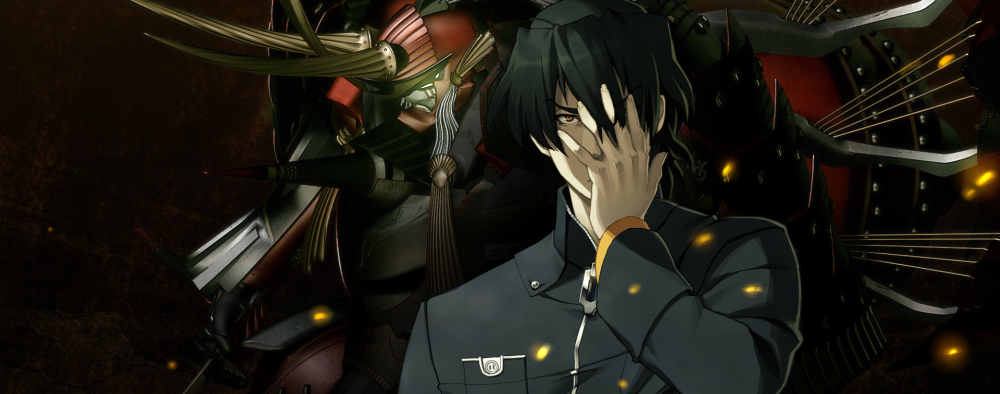
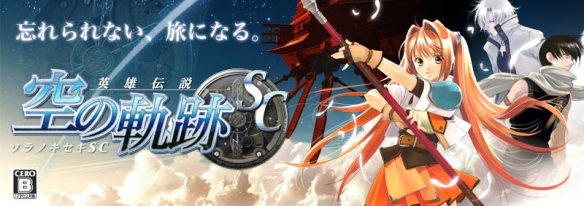
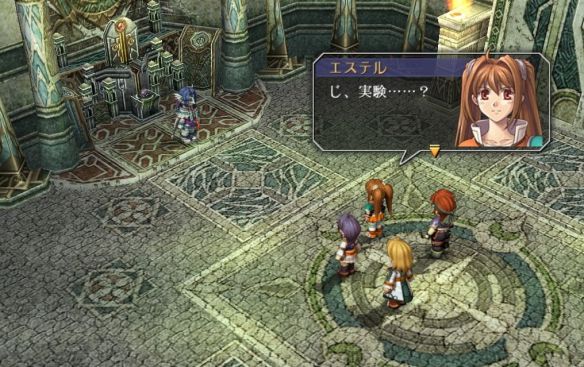

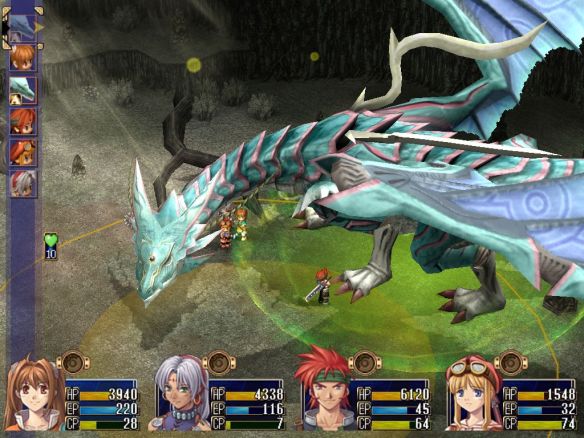
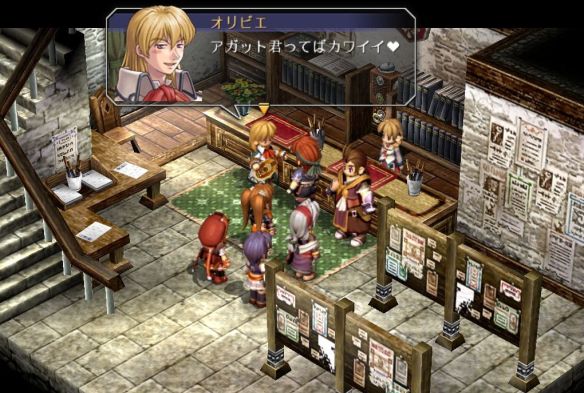
Pingback: [Review] Eiyuu Densetsu: Sora no Kiseki the 3rd | gareblogs
Pingback: [Review] Eiyuu Densetsu: Sora no Kiseki the 3rd | VN Reviews Hub
One of my all time retro Favourites Currently waiting for English version of S.C and currently in hiatus of playing I also have an imported ao no kiseki too
Hello, I do not speak Japanese, is it easy to play the vita Japanese version?
Kiseki games are extremely text-heavy and their main appeal are their stories and characters, so playing the JP version without knowing Japanese is pointless, imo.
I totally can relate to your review like 100% I’ve played both FC and SC twice and never get sick of it. Haven’t tried the TC tho’ it looks promising. Btw i cannot find the manga in the link you gave us. Why is that? I have been searching the manga for like forever, I have only read the Loewe Monogatari not this one and I need it TwT
If memory serves, that link led to manga chapters that were only available for a limited time. I’m assuming they’ve since been removed.